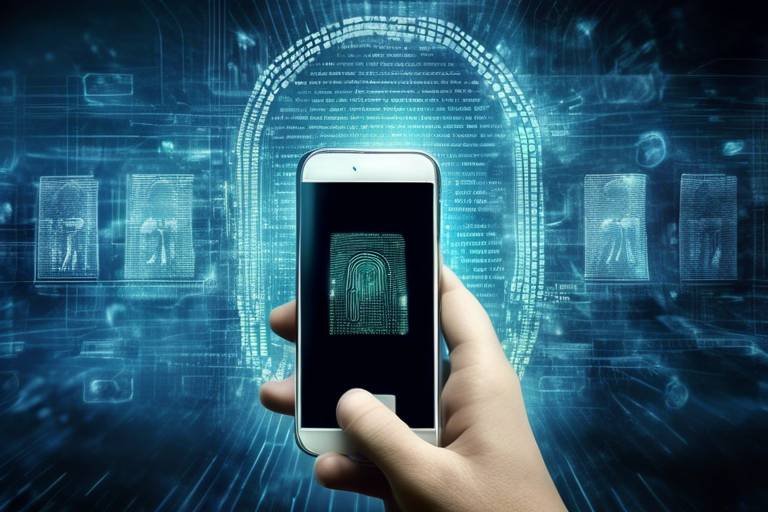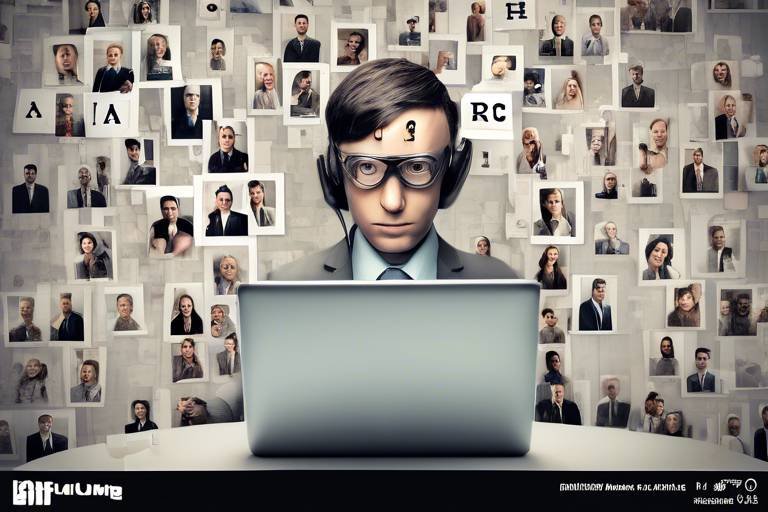Blockchain in Healthcare: A Potential Game Changer
In recent years, the healthcare sector has been under immense pressure to evolve and adapt to the rapid advancements in technology. One of the most promising innovations making waves is blockchain technology. Imagine a world where patient data is not only secure but also easily accessible to authorized healthcare providers, enhancing the quality of care while maintaining strict privacy standards. This is not just a dream; it's a potential reality with blockchain. As we delve into this topic, we’ll explore how blockchain can transform healthcare, making it more efficient, transparent, and secure.
Blockchain, at its core, is a decentralized digital ledger that records transactions across multiple computers so that the recorded transactions cannot be altered retroactively. This characteristic makes blockchain an ideal candidate for addressing some of the most pressing challenges in healthcare, such as data breaches, inefficiencies in patient record management, and the need for better supply chain transparency. By leveraging this technology, healthcare providers can not only enhance patient care but also build trust within the system.
One of the most exciting aspects of blockchain in healthcare is its ability to facilitate secure patient data management. Traditionally, patient data has been scattered across various systems, often leading to incomplete information and a lack of coordination among care providers. With blockchain, patient records can be stored in a secure, tamper-proof environment, allowing for seamless sharing of information among authorized personnel. This not only improves the quality of care but also reduces the risk of medical errors.
Moreover, blockchain can significantly enhance the interoperability of healthcare systems. Imagine being able to access a patient's complete medical history in real-time, regardless of where they received care. This capability can lead to better decision-making and more personalized treatment plans. Additionally, patients can have greater control over their data, deciding who can access their information and under what circumstances. This empowerment is crucial in building a patient-centric healthcare model.
However, while the potential of blockchain in healthcare is immense, it is not without its challenges. Regulatory hurdles, integration with existing healthcare systems, and concerns about scalability and energy consumption are just a few of the obstacles that must be navigated. For instance, compliance with regulations such as HIPAA is essential to ensure that patient privacy and data security are upheld. As the industry moves forward, addressing these challenges will be critical to realizing the full potential of blockchain technology.
In conclusion, blockchain technology is poised to be a game changer in the healthcare sector. By enhancing data security, improving interoperability, and streamlining supply chain management, it can lead to better patient outcomes and a more efficient healthcare system overall. As we continue to explore and innovate, the future of healthcare looks promising with blockchain at the forefront.
- What is blockchain technology?
Blockchain is a decentralized digital ledger that securely records transactions across multiple computers, ensuring that the data cannot be altered retroactively.
- How can blockchain improve patient data management?
By providing a secure and tamper-proof environment for storing patient records, blockchain enables seamless sharing of information among authorized healthcare providers.
- What challenges does blockchain face in healthcare?
Challenges include regulatory hurdles, integration with existing systems, and concerns regarding scalability and energy consumption.
- Can patients control who accesses their data?
Yes, blockchain empowers patients to manage their consent for data sharing, allowing them to decide who can access their information.

Understanding Blockchain Technology
Blockchain is often described as a decentralized digital ledger, but what does that really mean? Imagine a notebook that everyone can see but no one can alter. Each page in this notebook is a "block," and when a page is filled with information, it gets sealed and linked to the previous page, forming a continuous chain. This technology is secure, transparent, and tamper-proof, making it ideal for various applications, especially in healthcare.
At its core, blockchain operates on the principles of decentralization and consensus. Unlike traditional databases that are controlled by a single entity, a blockchain is maintained by a network of computers (or nodes) that work together to validate and record transactions. This decentralized nature ensures that no single party has control over the entire system, which significantly reduces the risk of fraud and data manipulation.
In the healthcare sector, the implications of blockchain are profound. For instance, patient records can be securely stored on a blockchain, ensuring that they are only accessible to authorized personnel while maintaining a complete audit trail of who accessed the data and when. This level of security is crucial, especially when dealing with sensitive patient information.
To further illustrate how blockchain works, let’s break down its key components:
- Blocks: Each block contains a set of transactions or data entries.
- Chain: Blocks are linked together in chronological order, forming a chain.
- Decentralization: The ledger is distributed across multiple nodes, ensuring no single point of failure.
- Consensus Mechanisms: Nodes must agree on the validity of transactions before they are added to the blockchain.
Moreover, the technology employs cryptographic techniques to secure the data within each block. This means that even if someone were to gain access to the blockchain, they would find it nearly impossible to alter any information without being detected. Each block is time-stamped and linked to the previous block, creating a permanent and unchangeable record of transactions.
In summary, understanding blockchain technology is essential for recognizing its potential applications in healthcare. By providing a secure and transparent way to manage data, blockchain can enhance patient care, improve data security, and streamline processes across the healthcare ecosystem. As we delve deeper into its applications, the transformative power of blockchain becomes increasingly clear.
Here are some common questions regarding blockchain technology in healthcare:
- What is blockchain? Blockchain is a decentralized digital ledger that securely records transactions across multiple computers.
- How does blockchain enhance data security? By using cryptographic techniques and decentralization, blockchain ensures that data cannot be easily tampered with or accessed by unauthorized parties.
- Can blockchain improve patient care? Yes, by providing secure access to patient data, healthcare providers can make more informed decisions, leading to better patient outcomes.

Applications of Blockchain in Healthcare
Blockchain technology is not just a buzzword; it’s a revolutionary force reshaping various sectors, and healthcare is no exception. The applications of blockchain in healthcare are vast and varied, each one unlocking new potentials for efficiency and trust. Imagine a world where patient data is not only secure but also easily accessible to authorized healthcare providers, all while maintaining the utmost privacy. This is not just a dream; it’s a reality that blockchain can help create.
One of the standout applications of blockchain in healthcare is secure patient data management. With traditional systems, patient data is often scattered across multiple platforms, leading to inefficiencies and potential security breaches. Blockchain offers a decentralized solution where patient data can be stored securely and accessed only by those with the right permissions. This means that sensitive information, such as medical histories and treatment plans, is protected from unauthorized access while still being readily available to healthcare professionals when needed.
Moreover, blockchain enhances data interoperability among different healthcare systems. Picture this: a patient visits a new doctor who needs access to their previous medical records. With blockchain, that doctor can seamlessly retrieve the necessary information without the hassle of paperwork or waiting for faxes. This capability not only improves care coordination but also reduces the duplication of tests and procedures, ultimately leading to better patient outcomes.
Another fascinating aspect of blockchain technology is its ability to empower patients through enhanced consent management. Patients often feel like passive participants in their healthcare journey, but blockchain changes the game. With this technology, patients can manage their consent for data sharing effectively. They have the power to decide who can access their information and under what circumstances. This level of control is not just a win for privacy; it also fosters trust between patients and healthcare providers.
Blockchain also plays a crucial role in supply chain management within the healthcare sector. The authenticity and traceability of pharmaceuticals and medical supplies are paramount in preventing fraud and counterfeiting. Imagine a scenario where every medication can be traced back to its origin, ensuring that patients receive only genuine products. Blockchain provides a transparent and immutable ledger that records every transaction, making it easier to track the journey of medical supplies from manufacturers to patients. This transparency not only boosts trust among consumers but also enhances safety in drug administration.
As we explore these applications, it's clear that the integration of blockchain technology in healthcare is not merely a trend; it's a transformative shift that promises to enhance the overall healthcare experience. Whether it's through secure patient data management, improved interoperability, patient empowerment, or robust supply chain integrity, blockchain is paving the way for a more efficient and trustworthy healthcare system.
- What is blockchain technology?
Blockchain is a decentralized digital ledger that securely records transactions across multiple computers, ensuring that the recorded information cannot be altered retroactively. - How does blockchain improve patient data security?
By using encryption and decentralized storage, blockchain protects patient data from unauthorized access while allowing authorized users to access it easily. - Can blockchain help reduce healthcare costs?
Yes, by improving efficiency, reducing fraud, and minimizing administrative burdens, blockchain has the potential to lower overall healthcare costs. - What are the challenges of implementing blockchain in healthcare?
Challenges include regulatory compliance, integration with existing systems, and concerns regarding scalability and energy consumption.

Secure Patient Data Management
In the rapidly evolving world of healthcare, the management of patient data has become a critical concern. Traditional systems often struggle with issues like data breaches, unauthorized access, and lack of transparency. This is where blockchain technology steps in as a formidable ally. Imagine a world where your medical records are not only secure but also accessible to you and your healthcare providers at the click of a button. Sounds revolutionary, right? With blockchain, this vision is becoming a reality.
At its core, blockchain offers a decentralized and tamper-proof way of storing data. Each record is encrypted and linked to previous records, creating a chain of information that is nearly impossible to alter without detection. This means that patient data can be securely managed without fear of it being manipulated or accessed by unauthorized individuals. In essence, blockchain acts like a digital vault, safeguarding sensitive information while allowing for authorized access.
Moreover, blockchain enhances data interoperability among various healthcare systems. Imagine being able to share your medical history seamlessly with different healthcare providers without the hassle of paperwork or the risk of miscommunication. This capability not only improves care coordination but also reduces the duplication of tests and procedures, ultimately leading to better patient outcomes.
Additionally, blockchain empowers patients by enhancing patient consent management. Traditionally, patients often have little control over who accesses their medical information. However, with blockchain, individuals can manage their consent more effectively. They can specify who has access to their data and under what circumstances, putting them back in the driver's seat when it comes to their healthcare information. This not only builds trust but also fosters a more patient-centered approach to healthcare.
To illustrate the benefits of secure patient data management through blockchain, consider the following table:
| Benefit | Description |
|---|---|
| Data Security | Encryption and decentralization make patient data highly secure against breaches. |
| Interoperability | Seamless sharing of patient information among various healthcare providers. |
| Patient Control | Empowers patients to manage their consent for data access effectively. |
| Efficiency | Reduces duplication of tests and procedures, saving time and resources. |
In summary, the secure management of patient data through blockchain technology not only enhances data security but also improves the overall patient experience. As healthcare continues to evolve, embracing this innovative technology could very well be the key to unlocking a future where patient data is both secure and accessible, fostering trust and improving care delivery.
Q: How does blockchain ensure the security of patient data?
A: Blockchain uses encryption and a decentralized structure to protect patient data. Each record is linked to previous ones, making unauthorized alterations nearly impossible.
Q: Can patients control who accesses their medical information?
A: Yes, blockchain technology allows patients to manage their consent for data sharing, giving them control over who can access their information and under what circumstances.
Q: What are the benefits of interoperability in healthcare?
A: Interoperability allows for seamless sharing of patient information among different healthcare providers, improving care coordination and reducing unnecessary duplication of tests.
Q: Are there challenges to implementing blockchain in healthcare?
A: Yes, challenges include regulatory compliance, integration with existing systems, and concerns about scalability and energy consumption.

Improving Data Interoperability
In today’s fast-paced healthcare environment, the ability to share patient information seamlessly across various systems is not just a luxury; it’s a necessity. Imagine a world where your medical history, prescriptions, and allergies could be accessed by any healthcare provider you visit, without the hassle of redundant paperwork or repeated tests. This is where blockchain technology steps in, offering a promising solution to the longstanding challenge of data interoperability.
Blockchain enables a secure and transparent framework for sharing data among different healthcare entities. By creating a decentralized ledger, it ensures that all parties involved can access the same, up-to-date information without compromising patient privacy. This means that when a patient visits a new doctor, their complete medical history can be retrieved instantly, facilitating better-informed decisions and personalized care. The potential for improved patient outcomes is enormous!
One of the key advantages of blockchain in enhancing data interoperability lies in its ability to standardize data formats. By utilizing smart contracts, healthcare providers can ensure that the data shared adheres to specific protocols and formats, making it easier to interpret and use. This leads to a more cohesive healthcare experience, where information flows smoothly between hospitals, clinics, and specialists.
Moreover, the transparency of blockchain can significantly reduce the chances of errors and fraud. When patient data is recorded on a blockchain, it becomes nearly impossible to alter without detection. This not only builds trust among healthcare providers but also reassures patients that their information is secure and accurate. The implications for data integrity are profound, as fewer errors mean higher quality care.
However, it’s essential to recognize that achieving true interoperability requires collaboration among various stakeholders. Healthcare organizations, technology providers, and regulatory bodies must work together to create standards and protocols that facilitate the use of blockchain technology. This collaborative effort is crucial for overcoming the barriers that currently hinder data sharing in the healthcare sector.
In summary, improving data interoperability through blockchain technology holds the potential to transform patient care. By enhancing the sharing of information, reducing errors, and fostering collaboration among healthcare providers, blockchain can pave the way for a more efficient and effective healthcare system. As we move forward, the focus should be on harnessing this technology to create a seamless experience for patients and providers alike.
- What is blockchain technology?
Blockchain is a decentralized digital ledger that records transactions across multiple computers securely and transparently. - How does blockchain improve data interoperability in healthcare?
It allows for secure, standardized sharing of patient data across different healthcare systems, enhancing coordination and reducing errors. - What are the challenges of implementing blockchain in healthcare?
Challenges include regulatory compliance, integration with existing systems, and scalability concerns. - Can patients control their data using blockchain?
Yes, blockchain empowers patients to manage their consent for data sharing, giving them control over who accesses their information.

Enhancing Patient Consent
In the ever-evolving landscape of healthcare, patient consent is becoming increasingly vital. Imagine a world where patients have complete control over their personal health information—where they can decide who accesses their data and for what purpose. This is where blockchain technology steps in, acting as a digital gatekeeper that empowers patients like never before. With blockchain, consent management transforms from a cumbersome process into a seamless experience.
Traditionally, obtaining and managing patient consent has been a complex and often opaque process. Patients might sign forms without fully understanding the implications, or their consent could be buried in paperwork, making it difficult to track who has access to their data. Blockchain changes this narrative by creating a transparent and immutable record of consent transactions. Each time a patient grants or revokes access, that action is recorded on the blockchain, ensuring a clear audit trail.
This transparency not only builds trust between patients and healthcare providers but also enhances accountability. Patients can see exactly who has accessed their information and for what reasons, which is crucial in an era where data breaches are all too common. Imagine being able to revoke access to your medical records with a simple click, knowing that the change is instantly reflected in a secure ledger. This level of control is empowering, and it encourages patients to engage more actively in their healthcare journeys.
Moreover, blockchain facilitates a more granular approach to consent. Patients can specify conditions under which their information can be shared. For instance, they might allow their data to be used for research but not for marketing purposes. This fine-tuning of consent options can be easily managed through a user-friendly interface, making it accessible for patients of all ages and tech-savviness.
As we look to the future, the potential for enhancing patient consent through blockchain is immense. It can lead to a more personalized healthcare experience, where patients feel respected and valued. However, for this vision to become a reality, stakeholders across the healthcare ecosystem must collaborate to develop standards and best practices for implementing blockchain solutions effectively.
In summary, blockchain technology is not just a buzzword; it represents a fundamental shift in how we think about patient consent. By providing a secure, transparent, and user-friendly platform, blockchain empowers patients to take charge of their health information. As we continue to explore the possibilities of this innovative technology, we can look forward to a future where patient consent is not only respected but celebrated.
- What is blockchain technology?
Blockchain is a decentralized digital ledger that securely records transactions across multiple computers, ensuring that the data cannot be altered retroactively. - How does blockchain enhance patient consent?
Blockchain provides a secure and transparent way for patients to manage their consent, allowing them to control who accesses their data and under what circumstances. - Is patient data secure on the blockchain?
Yes, blockchain technology enhances data security by making it tamper-proof and providing an immutable record of all transactions. - What challenges does blockchain face in healthcare?
Challenges include regulatory compliance, integration with existing systems, and concerns about scalability and energy consumption.

Supply Chain Management
When we think about the healthcare supply chain, it’s not just about getting medicines from point A to point B; it’s about ensuring that every single item is authentic, safe, and effective for patient use. This is where blockchain technology steps in as a potential game changer. Imagine a world where every pill, syringe, and medical device can be traced back to its origin, guaranteeing its authenticity and safety. With the increasing threats of counterfeit drugs and fraudulent medical supplies, the need for a robust solution has never been more pressing.
Blockchain offers a decentralized and transparent method for tracking the entire lifecycle of healthcare products. Each transaction related to a product can be recorded on the blockchain, creating an immutable history that is accessible to all authorized parties. This level of transparency not only helps in verifying the authenticity of products but also builds trust among stakeholders in the healthcare ecosystem. For instance, if a hospital receives a shipment of vaccines, they can trace back the supply chain to ensure that these vaccines were stored properly and have not been tampered with.
Moreover, blockchain can streamline the process of managing recalls. In traditional systems, identifying the affected batches of products can take time, leading to potential risks for patients. With blockchain, this process can be expedited significantly. If a manufacturer discovers an issue with a batch of medication, they can quickly notify all parties involved, allowing for swift action to be taken. This not only enhances patient safety but also minimizes financial losses for healthcare organizations.
Let’s take a closer look at some of the key benefits of implementing blockchain in supply chain management:
- Authenticity Verification: Each product's journey can be traced, ensuring that it is genuine and not counterfeit.
- Enhanced Transparency: All parties in the supply chain can access the same information, reducing misunderstandings and disputes.
- Improved Efficiency: Automated processes reduce the time and resources spent on tracking and managing inventory.
- Risk Mitigation: Quick identification and response to issues like recalls can save lives and reduce liability.
However, the implementation of blockchain in supply chain management is not without its challenges. One of the significant hurdles is the need for standardization across different systems and organizations. Each player in the supply chain must agree on data formats and protocols for blockchain to be effective. Additionally, there are concerns regarding the scalability of blockchain solutions, especially when dealing with large volumes of transactions typical in healthcare.
Despite these challenges, the potential benefits of blockchain in healthcare supply chain management are too significant to ignore. As technology continues to evolve, we may soon see a shift towards more secure, efficient, and transparent supply chains in the healthcare sector. This could ultimately lead to better patient outcomes and a more resilient healthcare system.
Q1: How does blockchain enhance supply chain transparency?
A1: Blockchain enhances transparency by providing a decentralized ledger that records every transaction in the supply chain. This allows all authorized parties to access real-time information about the product's journey, ensuring authenticity and safety.
Q2: What challenges does blockchain face in healthcare supply chains?
A2: Some challenges include regulatory compliance, integration with existing systems, and the need for standardization among various stakeholders in the supply chain.
Q3: Can blockchain help in managing product recalls?
A3: Yes, blockchain can significantly speed up the recall process by allowing quick identification of affected products and notifying all relevant parties efficiently.
Q4: Is blockchain technology scalable for large healthcare systems?
A4: While blockchain has the potential to scale, concerns about transaction speed and volume need to be addressed to ensure it can handle the demands of large healthcare systems.

Challenges of Implementing Blockchain in Healthcare
Implementing blockchain technology in healthcare is not all sunshine and rainbows; it comes with its own set of hurdles that need careful navigation. One of the most significant challenges is the regulatory landscape. Healthcare is a highly regulated industry, and ensuring compliance with existing laws, such as HIPAA in the United States, is crucial. These regulations are designed to protect patient privacy and data security, and any new technology must align with them. The complexity of these regulations can create a daunting barrier for healthcare organizations looking to adopt blockchain solutions.
Another significant hurdle is the integration of blockchain with legacy systems. Many healthcare organizations still rely on outdated technology that may not be compatible with the decentralized nature of blockchain. This can lead to issues in data migration and interoperability, making it difficult to create a seamless transition. Imagine trying to fit a square peg into a round hole; that's what it feels like for many organizations attempting to integrate blockchain into their existing frameworks.
Furthermore, there are concerns regarding the scalability of blockchain technology. While it promises secure and transparent transactions, the current infrastructure may struggle to handle the vast amounts of data generated in the healthcare sector. This raises questions about the energy consumption associated with maintaining such a system. As healthcare providers aim to enhance patient care through efficient data management, they must also consider the environmental impact of their technological choices.
Lastly, the lack of understanding and awareness about blockchain among healthcare professionals can hinder its adoption. Many stakeholders may be skeptical about the technology's benefits, fearing that it may complicate rather than simplify processes. To overcome this, education and training are essential. Organizations need to invest in educating their staff about the potential of blockchain, addressing misconceptions, and highlighting its advantages.
In summary, while blockchain holds immense promise for revolutionizing healthcare, its implementation is fraught with challenges. Addressing regulatory compliance, integrating with legacy systems, ensuring scalability, and educating stakeholders are crucial steps that must be taken to harness its full potential.
- What is blockchain technology? Blockchain is a decentralized digital ledger that securely records transactions across multiple computers, ensuring that the recorded information cannot be altered retroactively.
- How can blockchain improve patient data security? By providing a secure and tamper-proof method of storing patient data, blockchain ensures that only authorized individuals have access, thus enhancing data security.
- What are the regulatory challenges of implementing blockchain in healthcare? Healthcare organizations must navigate complex regulations like HIPAA to ensure patient privacy and data security while adopting blockchain technology.
- Can blockchain be integrated with existing healthcare systems? Yes, but it poses significant technical challenges, especially when dealing with legacy systems that may not be compatible with blockchain technology.

Regulatory and Compliance Issues
The journey of integrating blockchain technology into healthcare is not without its bumps in the road. One of the most daunting challenges is navigating the complex web of . Healthcare is one of the most heavily regulated industries, and introducing a new technology like blockchain raises numerous questions about compliance with existing laws and regulations.
For instance, laws such as the Health Insurance Portability and Accountability Act (HIPAA) in the United States set stringent standards for protecting patient information. Any blockchain solution must ensure that it complies with these regulations to safeguard patient privacy. This means that while blockchain can enhance data security through its decentralized nature, it must also be designed with compliance in mind. The challenge lies in balancing innovation with the need to adhere to existing legal frameworks.
Moreover, the regulatory landscape is constantly evolving. As blockchain technology matures, regulatory bodies are beginning to take notice and develop guidelines specific to its use in healthcare. This can create uncertainty for healthcare organizations looking to adopt blockchain. They may find themselves in a situation where the rules are still being written, making it difficult to implement solutions that are both compliant and effective.
To illustrate the complexities involved, consider the following table that outlines key regulatory considerations for blockchain in healthcare:
| Regulation | Key Considerations |
|---|---|
| HIPAA | Ensuring patient data privacy and security; managing access controls. |
| FDA Regulations | Compliance for blockchain applications in clinical trials and medical devices. |
| GDPR | Data protection and privacy for patients in the EU; right to be forgotten. |
In addition to these regulations, healthcare organizations must also consider the implications of data ownership and patient rights. Who owns the data on a blockchain? Can patients request their data to be deleted or transferred? These questions are crucial as they directly impact patient trust and the overall success of blockchain adoption in healthcare.
As organizations begin to explore blockchain solutions, they must also engage with regulatory bodies to ensure their applications are compliant. This proactive approach can help mitigate risks and pave the way for smoother integration of blockchain technology into the healthcare ecosystem.
In conclusion, while the potential benefits of blockchain in healthcare are immense, the regulatory and compliance issues present significant challenges. It is essential for healthcare organizations to stay informed and adaptable to navigate this evolving landscape successfully.
- What are the main regulatory challenges for blockchain in healthcare?
The main challenges include compliance with HIPAA, FDA regulations, and GDPR, which govern data privacy, security, and patient rights.
- How can healthcare organizations ensure compliance when adopting blockchain?
Organizations should engage with regulatory bodies, conduct thorough assessments of their blockchain solutions, and implement best practices for data security and patient privacy.
- Is blockchain technology fully compliant with current healthcare regulations?
Not necessarily. Blockchain solutions must be specifically designed to comply with existing regulations, and ongoing dialogue with regulatory bodies is crucial.

Integration with Legacy Systems
Integrating blockchain technology with existing legacy systems in healthcare is akin to trying to fit a square peg into a round hole. The healthcare industry has been around for decades, and many organizations still rely on outdated systems that were never designed to work with cutting-edge technologies like blockchain. This creates a significant barrier to adoption. The challenge lies not only in the technical aspects but also in the cultural shift that must occur within healthcare organizations.
One of the primary issues is the incompatibility of legacy systems with modern blockchain frameworks. Most legacy systems were built on outdated programming languages and architectures, making it difficult to interface them with blockchain solutions. This can lead to data silos, where information is trapped in one system and cannot be easily shared or accessed by others. As a result, healthcare providers may struggle to achieve the seamless data interoperability that blockchain promises.
Moreover, the process of data migration is fraught with challenges. Organizations must ensure that the data transferred from legacy systems to blockchain is accurate, complete, and secure. This often requires extensive data cleansing and validation processes, which can be time-consuming and costly. In some cases, organizations may even need to consider a phased approach to integration, where certain functionalities are migrated first while others remain in the legacy system.
To tackle these challenges, healthcare organizations can consider the following strategies:
- Conducting a thorough assessment: Before implementing blockchain, organizations should evaluate their existing systems to identify compatibility issues and potential integration points.
- Investing in training: Healthcare professionals need to be educated about blockchain technology and its benefits. This can help facilitate a smoother transition and foster a culture of innovation.
- Collaborating with technology partners: Partnering with experienced blockchain developers can provide the expertise needed to bridge the gap between legacy systems and new technology.
Ultimately, the integration of blockchain with legacy systems is not just a technical challenge; it’s a transformational journey that requires commitment, resources, and a willingness to adapt. Organizations that successfully navigate this transition can unlock significant benefits, including improved data security, enhanced patient care, and increased operational efficiency.
Q1: What are legacy systems?
Legacy systems refer to outdated computer systems or applications that are still in use, often because they perform critical functions but are difficult to replace or upgrade.
Q2: Why is integration with legacy systems challenging?
Integrating blockchain with legacy systems is challenging due to incompatibility issues, data migration complexities, and the need for substantial changes in workflows and processes.
Q3: How can organizations overcome these challenges?
Organizations can overcome these challenges by conducting thorough assessments, investing in training, and collaborating with technology partners to ensure a smooth integration process.
Frequently Asked Questions
- What is blockchain technology?
Blockchain technology is a decentralized digital ledger that securely records transactions across multiple computers. This ensures that the recorded data cannot be altered retroactively, making it a reliable system for maintaining transparency and security.
- How can blockchain improve patient data management?
Blockchain enhances patient data management by providing a secure platform for storing sensitive health information. It allows authorized healthcare providers to access this data easily while ensuring that patients maintain control over who can view their information.
- What are the benefits of using blockchain in healthcare?
The benefits of blockchain in healthcare include improved data security, enhanced interoperability among systems, better patient consent management, and increased supply chain integrity. These advantages can lead to more efficient healthcare delivery and improved patient outcomes.
- What challenges does blockchain face in the healthcare sector?
Implementing blockchain in healthcare faces challenges such as regulatory compliance, integration with existing legacy systems, and concerns about scalability and energy consumption. Overcoming these hurdles is essential for successful adoption.
- How does blockchain enhance patient consent management?
Blockchain allows patients to have greater control over their consent for data sharing. They can specify who accesses their information and under what circumstances, empowering them to make informed decisions about their health data.
- Can blockchain help reduce fraud in the healthcare supply chain?
Yes, blockchain can significantly reduce fraud in the healthcare supply chain by ensuring the authenticity and traceability of pharmaceuticals and medical supplies. This transparency helps prevent counterfeiting and ensures that patients receive safe and effective products.
- Is blockchain technology energy-efficient?
Blockchain technology, particularly in its traditional forms like Bitcoin, has been criticized for high energy consumption. However, newer blockchain solutions are being developed with energy efficiency in mind, making them more suitable for widespread use in healthcare.


















